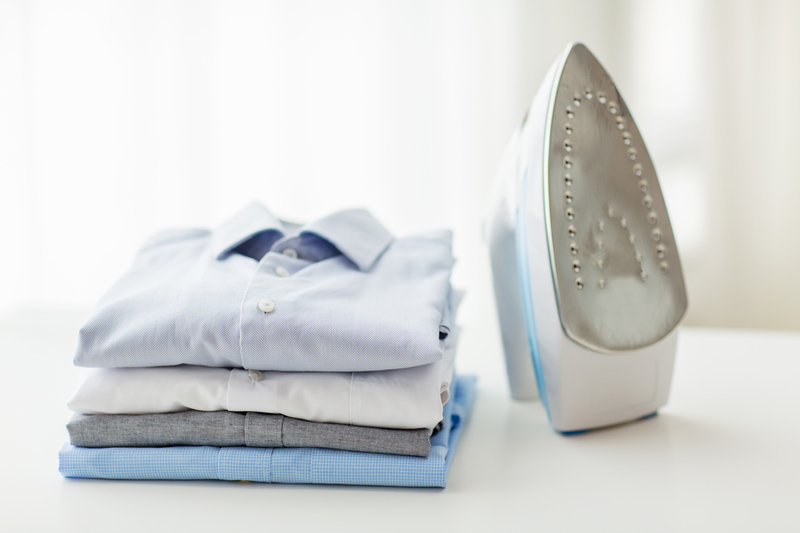How to Transform Your Bathroom into a Mold-Free Zone
Posted on 30/05/2025
How to Transform Your Bathroom into a Mold-Free Zone
Mold in the bathroom is a common but stubborn problem plaguing homes worldwide. Beyond being unsightly, mold impacts indoor air quality and can trigger allergies or respiratory issues. Thankfully, you can take decisive steps to transform your bathroom into a mold-free zone with proper cleaning, ventilation, and preventive strategies. This comprehensive guide explains how to banish bathroom mold for good and keep your space healthy, sparkling, and welcoming.
Why Bathroom Mold is a Problem
Mold thrives in moist, warm, and poorly ventilated environments--exactly like the conditions often found in residential bathrooms. When left unchecked, bathroom mold can:
- Stain grout, tiles, and walls
- Produce unpleasant odors
- Trigger allergies and breathing issues
- Damage bathroom fixtures and finishes
- Decrease your home's value
Preventing mold in the bathroom is essential not only for aesthetics but for your family's well-being. The steps below will show you how to create a mold-free bathroom permanently.

Understanding Common Causes of Bathroom Mold
- Poor Ventilation: Inadequate air flow allows moisture to linger, creating the ideal conditions for mold growth.
- Persistent Dampness: Leaky pipes, faulty seals, and puddles leave surfaces wet and open to infestations.
- Lack of Regular Cleaning: Neglected corners and crevices can quickly become breeding grounds for mold spores.
- Building Materials: Certain materials absorb and retain water, encouraging mold development.
By identifying these causes and addressing them proactively, you'll set the stage for your mold-free bathroom transformation.
Step 1: Improve Bathroom Ventilation
Install or Upgrade Your Exhaust Fan
The most effective defense against bathroom mold is efficient ventilation. An exhaust fan draws out humid air, preventing condensation and discouraging mold.
- Choose a fan rated for your bathroom's square footage.
- Run the fan during baths and showers, and for at least 30 minutes afterward.
- Clean the fan blades and vents every few months to maintain effectiveness.
Open Windows and Doors
If possible, crack open a window or leave the door ajar after using the bathroom. Fresh air circulation helps dry out surfaces faster.
Step 2: Control Moisture and Humidity
Wipe Down Wet Surfaces
After each shower or bath, quickly wipe down:
- Shower walls and doors
- Sink and countertop
- Floors, especially corners
Using a squeegee or towel keeps water from pooling and seeping into grout and caulk, where mold loves to hide.
Fix Leaks Immediately
Small leaks can lead to large mold issues. Inspect all bathroom fixtures regularly, including:
- Under-sink plumbing
- Toilet seals
- Shower faucets and heads
- Ceiling and wall joints
Promptly repair any leaks to prevent clandestine moisture buildup and long-term mold damage.
Invest in a Dehumidifier
In bathrooms without good ventilation or windows, a small dehumidifier helps keep humidity below 50%, the threshold where mold growth accelerates.
Step 3: Use Mold-Resistant Materials
Choose the Right Paint and Grout
Modern innovations allow you to further transform your bathroom into a mold-free zone by selecting materials specifically designed for wet environments:
- Mold-resistant bathroom paint: These paints contain anti-microbial agents that deter mold and mildew. Always use them on bathroom walls and ceilings.
- Epoxy-based grout: Unlike standard grout, epoxy is non-porous and resists water absorption, making it harder for mold to take hold.
Install Water-Resistant Fixtures
Look for mold-resistant caulk and shower liners, which help keep vulnerable areas sealed and dry.
Step 4: Clean Regularly and Thoroughly
Develop a Strict Cleaning Routine
Don't let dirt and soap scum accumulate. To maintain a mold-free bathroom, commit to these proven practices:
- Scrub showers, tubs, and tiles weekly with a mold-fighting bathroom cleaner.
- Spray a vinegar or hydrogen peroxide solution onto shower surfaces to spot-treat potential mold.
- Wipe mirrors, window sills, and all nooks often overlooked.
Use Natural Mold Removers
Some of the best anti-mold solutions use household ingredients:
- White vinegar: Spray undiluted vinegar onto affected areas. Let sit for an hour before scrubbing and rinsing.
- Baking soda: Mix with a little water to form a paste. Apply to grout and rinse after 10-15 minutes.
- Hydrogen peroxide (3%): Spray directly, let bubble, scrape, and rinse away for a bright, mold-free finish.
These options are safe, affordable, and surprisingly effective at removing mold from bathroom surfaces.
Step 5: Eliminate Clutter and Improve Storage
Shampoo bottles, loofahs, washcloths, and cleaning supplies, when left in damp environments, can collect mold. To keep your bathroom mold-free:
- Organize products in open, easy-to-clean baskets or shelves.
- Allow bath toys and sponges to air dry fully between uses.
- Store towels on rods, not hooks, so they dry faster.
Step 6: Address Stubborn Mold Immediately
Don't Ignore the Signs
If you spot persistent black or green patches, especially in corners, ceiling edges, or behind tiles, act quickly:
- Isolate the area using gloves and a mask.
- Remove and replace heavily infested caulk, grout, or drywall.
- Treat with an anti-mold solution before repairs.
Extensive mold growth may require professional remediation. Hidden mold behind walls or under flooring is dangerous and needs expert handling.
Bonus Tips: Long-Term Strategies for a Mold-Free Bathroom
Enhance Natural Lighting
Mold prefers darkness. If possible, add a skylight or keep window coverings open during the day. Sunlight is a natural mold deterrent.
Regularly Inspect for Hidden Mold
- Check behind or under vanities.
- Look inside exhaust fan housings.
- Lift bath mats and rugs frequently.
The sooner you spot trouble areas, the easier they are to clean and maintain.
Seal and Regrout Annually
Even mold-resistant grout and caulk degrade over time. Plan to reseal tiles and fixtures once a year to maintain your bathroom's mold defenses.

Frequently Asked Questions About Mold Prevention in Bathrooms
What causes bathroom mold to return?
Recurring mold often results from incomplete cleaning, leaky plumbing, or persistent dampness. Address all sources of moisture for a genuine mold-free bathroom.
Are bleach products good for removing bathroom mold?
*While bleach kills surface mold, it doesn't always eliminate mold roots embedded in porous surfaces like grout or drywall. Non-toxic alternatives such as vinegar and hydrogen peroxide stick around longer and attack deeper.*
How do I keep shower curtains mold-free?
- Wash them in hot water every month, add a little vinegar during the rinse cycle.
- Always stretch out the curtain after each use, so it dries fully.
Should I call a professional for bathroom mold?
If the moldy area exceeds ten square feet, or there's a musty odor you can't trace, seek a certified mold remediation expert for proper assessment and removal.
Conclusion: Enjoy a Mold-Free Bathroom for Life
With diligence, the right tools, and preventative care, your bathroom can stay fresh, mold-free, and healthy all year round. The key habits for transforming your bathroom into a mold-free zone are:
- Vigilant ventilation
- Consistent cleaning
- Moisture control
- Prompt repairs
- Periodic upgrades and inspections
Embrace these steps to banish bathroom mold and create a sparkling, safe space for your family. Say goodbye to stubborn stains, odors, and health worries--your dream mold-free bathroom awaits!





